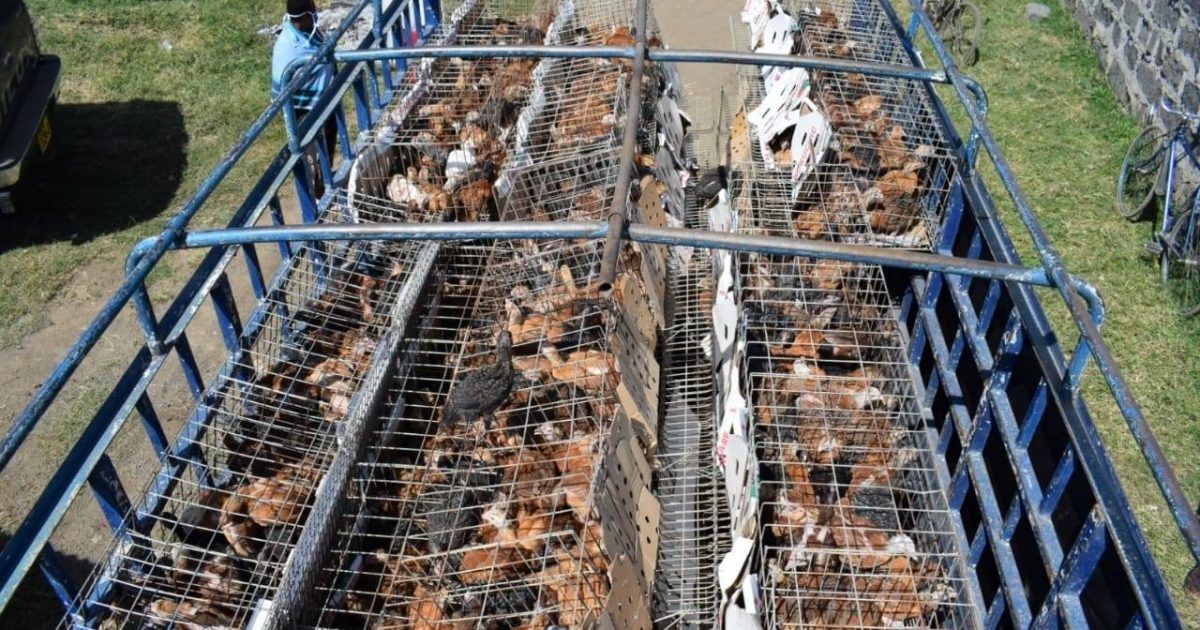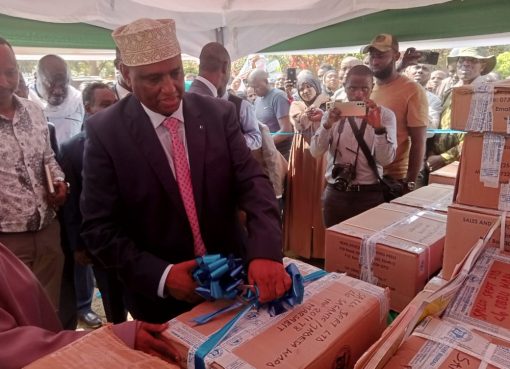Small holder farmers in Nakuru have benefited from a Sh 16 million programme aimed at improving breeding and multiplication of indigenous chicken.
The project by the County government aims at empowering farmers in eleven sub-counties to produce 1.5 million eggs worth Sh 15 million monthly.
Nakuru governor Lee Kinyanjui said the second batch of 3,800 improved Kienyeji chicks had been distributed to 24 women and youth groups in Kiratina area of Menengai East Ward, within Nakuru East Sub-County.
Some 250 farmers in Kiratina received the first batch of 7,600 improved Kienyeji chicks which the governor said require no special care and can be fed just like other indigenous chicken, hence low cost of production. The chicks he noted are improved to endure diverse climatic conditions and are highly tolerant to common chicken diseases like new castle.
“The project has been fashioned to promote urban agriculture while ensuring the use of limited available space to feed the growing population in urban centers. Our ultimate goal is to achieve food security and nutrition as well as create employment.
We want to improve the livelihoods of Nakuru people mainly through women and youth. The project will enable them take care of the needs of their families. It will also help them pay school fees for their children,” said Mr Kinyanjui.

To ensure that the small holder farmers realize optimum production, the county government has attached a veterinary and a livestock extension officer to the project who will equip the breeders with necessary technical advice such as how to feed the birds and administer vaccines.
Four farmer groups in Njoro Sub County had received 3,850 Kienyeji improved chicks, while in Naivasha Sub-County 1,900 chicks had been distributed to farmers in Biashara Ward.
The County government has also donated 5,100 chicks to various groups in parts of Nakuru West Sub-County. The devolved unit is targeting to distribute an additional 29,700 hens and cockerels within the next six months.
County Executive Committee Member for Agriculture Dr. Immaculate Maina said her department was also collaborating with Kenya Agricultural Livestock Research Organization (KALRO) in ensuring that farmers’ got improved Kienyeji chicken breeds that were high yielding, fast maturing, easy to maintain and disease resistant that have the ability to lay 220-280 eggs in a year, double the yield capacity of ordinary indigenous chicken.
Depending on what the farmer wants, the bird can be managed to produce eggs or meat. When managed as a broiler with commercial feeds, it can achieve 1.5 kg in seven weeks, or after three weeks of brooding it can be managed on free range with minimal supplementary feeding and be ready for consumption or sale after 10 to 14 weeks, according the Agriculture CEC.
“KALRO has previously distributed about 1.5 million day old chicks to farmers in Nakuru. More than 700,000 farmers have been trained on basic disease control and management mechanisms and best practices in poultry farming.
The poultry sub-sector has the potential to transform Kenya’s economy and improve the well-being of Kenyans. Agriculture contributes 26 per cent of the Gross Domestic Product (GDP) directly and 27 per cent indirectly in Kenya, 30 per cent of this comes from the poultry sub-sector. This is a big contribution to Kenya’s GDP,” said Dr Maina.
The county, Dr. Maina revealed, had also trained and linked extension officers with poultry farmers as it continues to work out marketing channels for live birds and poultry products to avert exploitation by brokers.
A veterinary officer from the County Ms. Caroline Sitienei urged the farmers to ensure that they have proper housing for their chicks and that they adhere to the feeding and vaccination programmes.
She said traditional indigenous chickens make about 76 per cent of the total poultry population in Kenya and produce about 55 and 47 per cent of the total meat and eggs respectively.
“Improved indigenous chickens have advantages over traditional ones because the former has undergone intensive selective breeding by primary breeders to ensure optimum performance in terms of increased egg production and higher cold dressed weight.
This indigenous chicken breeding and multiplication programme has been unveiled at a time the country is witnessing high market prices for indigenous chicken products,” observed Ms Sitienei.
Statistics from the Ministry of Agriculture indicate that Kenya has an estimated poultry population of 31million birds. Out of these, 75 per cent consist of indigenous chicken, 22 per cent of broilers and layers and one per cent of breeding stock. The traditional chicken is mostly kept in rural areas while layers and broilers are mainly reared in the urban areas.
Ms Sitienei said the programme targets to have farmers rear improved Kienyeji Chicken varieties that start laying eggs only five months after being hatched and produce an average meat weight of 1.5kg, while a cock should weigh at least 2kg.
Menengai East Member of County Assembly Wilson Mwangi said though the project was economically empowering women and youth high cost of commercial feeds and low hatchability of eggs at farm level were major constraints in the adoption of the improved indigenous chicken.
Commercializing the indigenous chicken sector, he said, was facing several challenges among them frequent disease outbreaks, poor access to improved breeding stock, inadequate management skills, knowledge and information leading to poor productivity and loss of market opportunities.
Mwangi called on the two levels of government to come up with strategies that will address challenges stifling the industry by streamlining market channels to ensure cheaper feeds, shorter production period, and shorter supply chain and guaranteed market. He noted with good management, the improved indigenous breed was the best for farmers given its resilient nature.
Chairlady to Kiratina Community Based Organization Ms Joyce Wanjiru Njoroge stated that improved technology in breeding and multiplication of Indigenous chicken and focus on optimization will shorten production cycles for farmers and enable them enjoy quick returns.
Ms Njoroge said current statistics from the National Farmers Information System (NFIS) indicate that an egg from indigenous chicken retails for Sh25-30 compared to those from hybrid layers which trade for Sh12-15 per egg. A 3kg indigenous chicken, according to NFIS retails for Sh600-800 with the price likely to be higher in major cities like Nairobi, Mombasa and Nakuru.
By Anne Mwale




